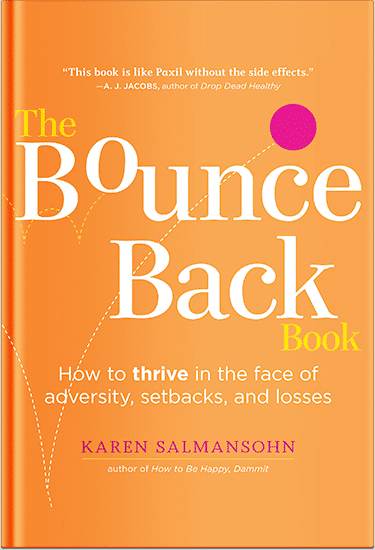 Big life goals create a blend of excitement and pressure. In the beginning, motivation feels steady and bright. You can picture the future clearly, and you feel ready to commit. But as daily responsibilities return, it becomes harder to stay connected to a goal that takes time to unfold. Life gets busy, energy dips, and the distance between where you are and where you want to be can feel wider than expected.
Big life goals create a blend of excitement and pressure. In the beginning, motivation feels steady and bright. You can picture the future clearly, and you feel ready to commit. But as daily responsibilities return, it becomes harder to stay connected to a goal that takes time to unfold. Life gets busy, energy dips, and the distance between where you are and where you want to be can feel wider than expected.
The truth is, staying motivated and on track is not just about discipline. It is about building a routine that supports you from the inside out. When your habits, surroundings, and mindset work together, the path forward feels lighter and more achievable.
The approaches below show you how to create that steady foundation.
Set the Vision, Then Make It Visible
A big part of staying motivated comes from keeping your goal within sight. When it disappears from your surroundings, it becomes easier to forget, delay, or disconnect from it. This is why making your goal visible is such a strong first step. Seeing it every day keeps it present in your mind and helps your focus stay steady without feeling forced.
A simple way to do this is by using a visual tool like a large wall calendar. It shows all twelve months at once, which makes it easier to see how your plans fit together. Most brands, such as the Big Ass Calendar, offer dry-erase designs with color-coded labels that you can shift or rewrite as things change. Having your plan visible this way creates a steady, quiet reminder of what you are working toward..
Here is how visibility strengthens your progress:
- It keeps the intention behind your goal alive each day.
- It gently nudges you toward regular action.
- It minimizes avoidance because the plan stays in front of you.
- It offers an honest, wide-angle view of your pace.
Once your goal becomes part of your environment, you relate to it more often. That repeated familiarity slowly builds the consistency you need to stay on track.
Break Your Goal Into Movements, Not Just Milestones
Milestones are useful, but they often feel rigid or too far apart. A more supportive approach is to break your goal into movements. Each movement carries its own energy and purpose. These phases help you understand the emotional shape of your journey instead of seeing it as a simple checklist.
Some meaningful movements include:
- The Learning Movement, where you gather knowledge and reduce fear.
- The Building Movement, where you begin early drafts or first steps.
- The Momentum Movement, where you show up consistently at any pace.
- The Refining Movement, where you adjust and soften what needs improving.
- The Celebration Movement, where you acknowledge growth and anchor confidence.
These movements create a flexible path instead of a rigid plan. They give you room to evolve while staying engaged with your goal. When you can sense which movement you are in, you stay connected to your progress instead of feeling lost or overwhelmed.
Build Micro Habits That Support the Bigger Identity
Small habits matter, but they become much more powerful when they support the identity you want to grow into. The right microhabits act like signals to your brain that you are stepping into the version of yourself who is capable of reaching your goal.
Here are a few identity-shaping microhabits:
- A two-minute ignition habit that switches your mind into focus mode.
- A morning identity anchor, such as reading a short goal intention.
- A transition ritual that resets your energy between tasks.
- A five-day micro streak challenge to refresh motivation when you slow down.
These small actions remind you of who you are becoming. They help your brain build a sense of consistency, even when the progress feels slow. Identity-based habits create long-lasting motivation because they support internal change, not just external action.
Review Your Year Like a Story, Not a Scorecard
Many people lose motivation because they evaluate progress with strict metrics. Numbers matter, but they do not tell the whole story. When you review your goal as a developing story, you create space for growth, patience, and resilience.
Try using reflective prompts such as:
- What part of my story grew this month?
- Where did I surprise myself?
- What felt heavy and why?
- What small win deserves more celebration than I gave it?
A story-based review helps you recognize progress that charts cannot show. It keeps your heart involved in the journey, which is essential for long-term goals.
Wrapping Up
Big life goals require more than motivation. They need structure, visibility, emotional support, and gentle consistency. When you bring all of these elements together, your progress becomes steadier and more meaningful. With the right tools, habits, and movements, your goal becomes something you grow into, step by step, with confidence and clarity.
P.S. Before you zip off to your next Internet pit stop, check out these 2 game changers below - that could dramatically upscale your life.
1. Check Out My Book On Enjoying A Well-Lived Life: It’s called "Your To Die For Life: How to Maximize Joy and Minimize Regret Before Your Time Runs Out." Think of it as your life’s manual to cranking up the volume on joy, meaning, and connection. Learn more here.
2. Life Review Therapy - What if you could get a clear picture of where you are versus where you want to be, and find out exactly why you’re not there yet? That’s what Life Review Therapy is all about.. If you’re serious about transforming your life, let’s talk. Learn more HERE.
Think happier. Think calmer.
Think about subscribing for free weekly tools here.
No SPAM, ever! Read the Privacy Policy for more information.
One last step!
Please go to your inbox and click the confirmation link we just emailed you so you can start to get your free weekly NotSalmon Happiness Tools! Plus, you’ll immediately receive a chunklette of Karen’s bestselling Bounce Back Book!


 Big life goals create a blend of excitement and pressure. In the beginning, motivation feels steady and bright. You can
Big life goals create a blend of excitement and pressure. In the beginning, motivation feels steady and bright. You can 